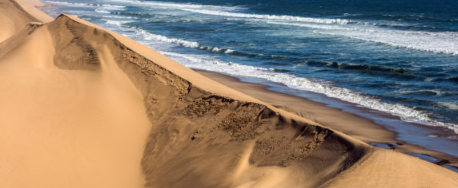
Namibia has a lot to offer a motorbike tour. Unbelievable scenery and panoramas with right roads, but beware: there are mikes and mikes and more miles between towns. After Mongolia, Namibia is the least populated country in the world. The Namib Desert is the oldest desert in the world.
If you are expecting to stay in hotels, lodges or B and Bs, the sooner you book, the better, even a year or more ahead of time, especially during the tourist seasons. Plan a slow trip with distances between stopovers not too far apart. Otherwise, you will miss out on the viewing stops, places of interest and the wildlife. If you’re riding on gravel roads, allow enough time as trying to keep to a tight schedule could lead to a disaster. Remember the long distances to hospitals and doctors, and, no, there are no emergency helicopters or nearby ambulances!
Most of the scenic attractions are off the tarred roads and on the gravel side roads, so be daring and hit the side streets (slowly, of course!). Be aware also that some gravel roads are for 4 x 4s, so plan well. If you are taking a leisurely trip, allow for safari tours offered by the various forms of accommodation. Avoid night riding and try to be at your destination before dark, as many animals come out in the cool of the night, and they tend to jump in front of vehicles with disastrous consequences.
Be Prepared
Carry the makings for tyre repairs if you don’t carry spare wheels and all the necessary tools for side-of-the-road repairs. Make use of petrol stations whenever you see one – you never know where the next one will be! If you’re driving to the very north of Namibia, check with your travel doctor to see what vaccinations and meds you will need before you leave home, there is a chance that you will need malaria pills.
When deciding when to travel, choose the dry season as the less greenery, the easier to see the animals, but within-season rates, it is more expensive. The winter months are from June to August, but remember there are 300 sunny days in a year! In the rainy seasons, the gravel roads become a swamp, and the animals don’t congregate at the dams as they can find water in any small depression. Remember to take warm clothing for those cold nights.
Visit Walvis Bay and Swakopmund, which are close together, but there is more to do in Swakopmund. Walvis Bay has stunning flocks of flamingo in the shallows and whales at sea. You may wish to take a whale-watching cruise. You will also see the Germanic influence in the architecture as the Germans colonised Namibia, but were driven out of the country by South African troops during the First World War. Unfortunately, there is not much to see in and do in Windhoek!